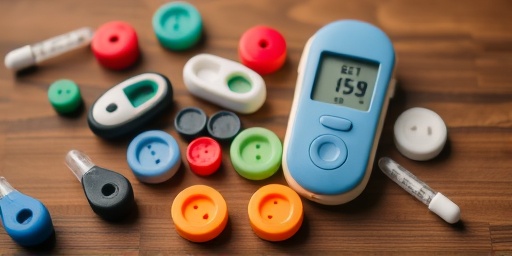Washington, D.C. – As American Diabetes Month kicks off with heightened urgency, leading doctors are sounding the alarm: millions of Americans exhibiting classic Diabetes symptoms have yet to undergo critical testing, putting them at risk for heart disease, kidney failure, and vision loss. The American Diabetes Association (ADA) estimates that over 7.5 million people in the U.S. live with undiagnosed diabetes, a figure that underscores the dire need for widespread screening during this pivotal health awareness period.
Health experts emphasize that early detection through simple blood tests can dramatically alter outcomes, preventing the severe complications that claim nearly 100,000 lives annually. ‘We’re seeing a silent epidemic where symptoms like unexplained fatigue and frequent urination go ignored,’ said Dr. Emily Carter, endocrinologist at Johns Hopkins Medicine. ‘Testing now could save lives and billions in healthcare costs.’
Undiagnosed Diabetes Surge Threatens Public Health
The Centers for Disease Control and Prevention (CDC) reports that 38.4 million Americans – about 11.6% of the population – have diabetes, with type 2 accounting for 90-95% of cases. Shockingly, one in three adults grapple with prediabetes, a precursor that often progresses undetected. During American Diabetes Month, this data paints a grim picture: thousands delay testing despite risk factors like obesity, family history, and sedentary lifestyles.
Recent studies from the National Institutes of Health (NIH) highlight how undiagnosed diabetes contributes to 1 in 4 heart attacks and strokes. In 2023 alone, emergency room visits for diabetes-related complications rose by 12%, per CDC Vital Signs. ‘Prevention starts with awareness,’ noted ADA CEO Tracey Brown. ‘American Diabetes Month is our call to action for testing and lifestyle changes.’
Demographic trends exacerbate the issue. African Americans, Hispanics, and Native Americans face 1.5 to 2 times higher diagnosis rates, yet testing disparities persist in underserved communities. Rural areas report 20% lower screening rates, according to a 2024 JAMA study, amplifying health inequities during this awareness campaign.
Recognizing Warning Signs That Signal Need for Testing
Doctors urge immediate diabetes testing for anyone noticing persistent symptoms. Common red flags include excessive thirst, blurred vision, slow-healing wounds, and tingling in extremities – signs that blood sugar levels are chronically elevated. ‘These aren’t just annoyances; they’re your body’s cry for help,’ warns Dr. Raj Patel, president of the American Association of Clinical Endocrinology.
- Increased Hunger and Thirst: Despite eating, cells starve for glucose, triggering insatiable cravings.
- Frequent Urination: Kidneys work overtime to expel excess sugar, disrupting sleep and hydration.
- Unexplained Weight Loss: The body breaks down muscle and fat for energy when insulin fails.
- Fatigue and Irritability: Energy crashes from inefficient glucose use affect daily life.
- Dark Skin Patches (Acanthosis Nigricans): A velvety discoloration on neck or armpits signals insulin resistance.
Women may experience recurrent yeast infections or polycystic ovary syndrome links, while men note erectile dysfunction as an early indicator. The ADA recommends A1C testing – a simple blood draw reflecting three-month average glucose – alongside fasting plasma glucose or oral glucose tolerance tests. At-home kits are now available via pharmacies, making testing accessible during American Diabetes Month.
High-Risk Groups Targeted for Proactive Screening
Those over 45, with BMI over 25, or family history should test annually. Gestational diabetes survivors face sevenfold postpartum risk, per NIH data. ‘Screening isn’t optional; it’s essential prevention,’ Dr. Carter stresses, citing how early intervention halves complication risks.
Proven Prevention Tactics Endorsed by Health Leaders
Beyond testing, prevention forms the cornerstone of American Diabetes Month messaging. The Diabetes Prevention Program (DPP) study showed lifestyle interventions – 7% weight loss and 150 minutes weekly exercise – slash type 2 diabetes risk by 58% in prediabetics, outperforming medication.
Experts advocate balanced diets rich in fiber: vegetables, whole grains, lean proteins. The Mediterranean diet reduced diabetes incidence by 52% in a 2023 PREDIMED trial. Limiting sugary drinks and processed foods curbs insulin spikes, while strength training twice weekly boosts glucose uptake.
- Monitor Carbs: Aim for 45-60 grams per meal; use apps like MyFitnessPal.
- Stay Active: Brisk walking post-meals stabilizes blood sugar.
- Sleep Well: Seven hours nightly prevents hormonal disruptions.
- Quit Smoking: Doubles diabetes risk; cessation programs abound.
- Regular Checkups: Blood pressure and cholesterol screening complements diabetes testing.
Pharmacological aids like metformin benefit high-risk individuals, but doctors prioritize sustainable habits. Community programs during American Diabetes Month offer free workshops, emphasizing holistic health.
Nationwide Events Spotlighting Diabetes Awareness and Testing
American Diabetes Month, observed every November since 1975, features virtual webinars, 5K walks, and pop-up screening sites. The ADA’s Tour de Cure raises funds while promoting testing; 2024 events in 50 states expect 100,000 participants. Cities like Chicago host ‘Screen to Win’ lotteries incentivizing tests.
Corporate tie-ins abound: Walmart and CVS provide free A1C checks November 1-30. Telehealth platforms like Teladoc offer subsidized consults. ‘These initiatives bridge gaps, ensuring testing reaches all,’ says Brown. Survivor stories dominate campaigns – like Maria Gonzalez, a 42-year-old teacher whose prediabetes diagnosis via a workplace screen averted full diabetes.
Schools integrate education: The Let’s Move! program teaches kids about prevention, combating youth obesity – a diabetes driver up 300% since 1980.
Future Outlook: Policy Shifts and Technological Advances in Diabetes Care
Looking ahead, the Inflation Reduction Act caps insulin at $35 monthly, boosting access. FDA-approved continuous glucose monitors (CGMs) like Dexcom G7 revolutionize real-time tracking, even for non-diabetics eyeing prevention. AI-driven apps predict risks via wearables, per a 2024 Lancet study projecting 30% diagnosis uptick by 2030.
Federal grants fund 500 new community health centers for testing. Experts forecast personalized medicine – gene therapies targeting beta cells – within a decade. For now, American Diabetes Month galvanizes action: schedule your test, adopt prevention habits, and advocate for health equity.
Dr. Patel concludes optimistically: ‘Early testing isn’t just about diabetes; it’s investing in lifelong health. Act today for a complication-free tomorrow.’









